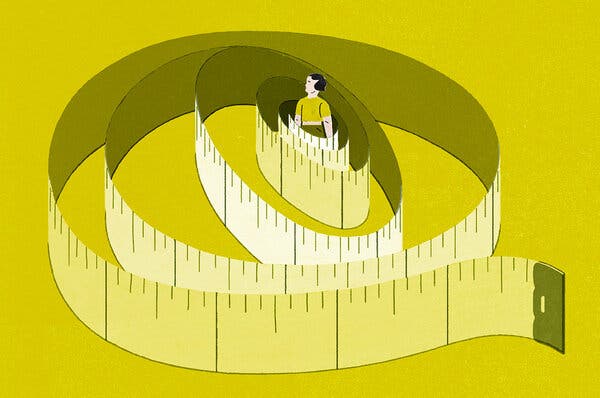
Advertisement
Personal Health
Distorted eating behaviors occur in young people irrespective of their weight, gender, race, ethnicity or sexual orientation.

Appearances, as I’m sure you know, can be deceiving. In one all-too-common example, adolescents and young adults with disordered eating habits or outright eating disorders often go unrecognized by both parents and physicians because their appearance defies common beliefs: they don’t look like they have an eating problem.
One such belief is that people with anorexia always look scrawny and malnourished when in fact they may be of normal weight or even overweight, according to recent research at the University of California, San Francisco.
The researchers, led by Dr. Jason M. Nagata, a specialist in adolescent medicine at the university’s Benioff Children’s Hospital, found in a national survey that distorted eating behaviors occur in young people irrespective of their weight, gender, race, ethnicity or sexual orientation. And it’s not just about losing weight.
The survey revealed that among young adults aged 18 to 24, 22 percent of males and 5 percent of females were striving to gain weight or build muscle by relying on eating habits that may appear to be healthy but that the researchers categorized as risky. These practices include overconsuming protein and avoiding fats and carbohydrates. The use of poorly tested dietary supplements and anabolic steroids was also common among those surveyed.
The Covid-19 pandemic has likely exacerbated the problem for many teenagers whose daily routines have been disrupted and who now find themselves at home all day with lots of food being hoarded in kitchens and pantries, Dr. Nagata said in an interview. “We’re seeing more patients and referrals for eating disorders and their complications,” he said.
Without a proper diagnosis and intervention, young people with distorted eating behaviors can jeopardize their growth and long-term health and may even create a substance abuse problem. The findings suggest that abnormal behavior with regard to food and exercise is often overlooked, misunderstood, ignored or perhaps viewed as a passing phase of adolescence.
This is especially true among teenage boys. One-third of the high school boys surveyed said they were trying to gain weight and bulk up, and many were using risky methods to achieve their goals, Dr. Nagata told me. Sixty percent of the girls surveyed said they were trying to lose weight. Some consumed unbalanced diets that can jeopardize their growth and long-term health; others resorted to induced vomiting or abused laxatives, diuretics, diet pills or engaged in other hazardous behaviors like fasting or excessive exercise.
